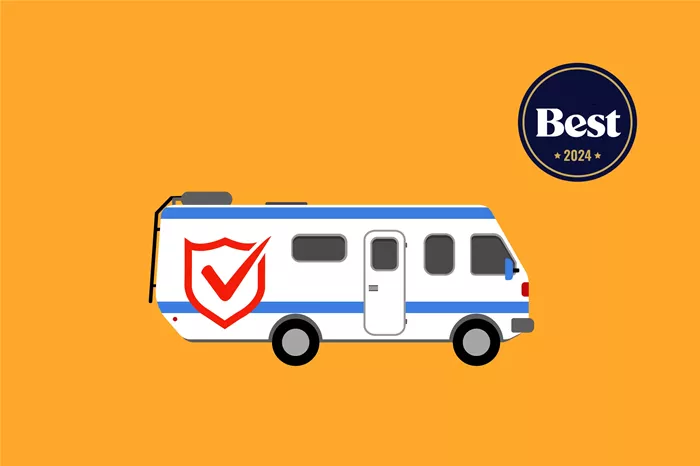When it comes to natural disasters, floods and mudslides are two of the most destructive events that can impact both residential and commercial properties. Understanding what is covered under your insurance policy can be complicated, especially when it comes to the relationship between flood insurance and mudslides. Many homeowners and property owners are left questioning whether their flood insurance will cover the damages caused by a mudslide. To clarify this often misunderstood topic, this article will explore the connection between mudslides and flood insurance, the coverage options available, and important considerations for property owners to keep in mind.
What is a Mudslide?
A mudslide, also known as a landslide or debris flow, occurs when water-laden soil, rock, and debris move rapidly down a slope, typically due to heavy rainfall, snowmelt, or other natural events. While mudslides often happen in hilly or mountainous regions, they can occur anywhere there is unstable soil. The forces behind mudslides can lead to significant damage to buildings, roads, and infrastructure, resulting in costly repairs and losses. The combination of water and soil can have devastating effects on property and personal belongings, making it essential for property owners to be adequately covered by insurance.
Flood Insurance and Its Coverage
Flood insurance is a specialized insurance policy that covers damages caused by flooding. Floods can result from heavy rain, rising waters from rivers or streams, or other water-related events. In the United States, flood insurance is often provided through the National Flood Insurance Program (NFIP), though private insurers may also offer similar policies.
Flood insurance typically covers damages to the structure of the property, including the foundation, walls, and flooring, as well as the contents within the property, such as furniture and appliances. However, flood insurance does not automatically cover damages caused by other disasters, such as earthquakes or mudslides. This is a crucial distinction for homeowners to understand, especially in areas prone to multiple types of natural disasters.
Are Mudslides Covered by Flood Insurance?
The short answer is: no, mudslides are typically not covered by flood insurance. While both floods and mudslides involve water, they are considered different types of natural disasters, and flood insurance is generally designed to cover flood-related damages, not mudslide damages. Flood insurance is specifically intended to cover damages caused by the rising or overflowing of water in a defined floodplain, whereas mudslides are a different type of event involving soil and debris movement.
However, there may be certain situations in which flood insurance could provide coverage for damages caused by a mudslide, depending on the circumstances. For example, if a mudslide occurs as a direct result of flooding — such as when heavy rains cause a river to overflow, leading to both flooding and mudslides — flood insurance may cover the resulting damages. In such cases, the key factor in determining coverage would be whether the primary cause of the loss was flood-related.
To get a clearer understanding of the distinctions, it is essential to examine the details of your policy and to contact your insurer directly to confirm what is covered in your specific situation. In general, however, mudslides that occur independently of a flood are not typically covered by flood insurance.
Additional Coverage for Mudslides
Since flood insurance does not cover mudslides, property owners who live in areas prone to these natural events may need to seek additional coverage options. There are a few options that could help protect your property from the financial impacts of a mudslide.
1. Landslide Insurance
Some insurance providers offer landslide insurance or coverage options for mudslides. This type of policy is specifically designed to cover damages caused by mudslides, landslides, and debris flows. However, landslide insurance is not always available in all areas, and the terms of coverage may vary depending on the insurer. If you live in a high-risk area for mudslides, it is worth exploring whether this type of coverage is available to you.
2. Homeowners Insurance
In some cases, a standard homeowners insurance policy may offer limited coverage for landslides or mudslides, but this is not always the case. Homeowners insurance typically covers damages caused by certain perils like fire, theft, or vandalism, but natural disasters such as mudslides may not be included. It is important to carefully review your home insurance coverage and ask your insurance provider whether you have any protection against mudslides.
3. Supplemental Coverage or Endorsements
If mudslide damage is not covered under your primary insurance policies, some insurers may offer supplemental coverage or endorsements that can be added to your existing policies. These endorsements are designed to provide additional protection for specific types of natural disasters, including mudslides. Keep in mind that these endorsements often come with additional premiums, so it is essential to weigh the cost of the coverage against the risk of mudslide damage in your area.
Factors That Affect Mudslide and Flood Coverage
Several factors can influence whether or not your property will be covered in the event of a mudslide or flood. Understanding these factors can help you make informed decisions about the type of coverage you need to protect your property.
1. Location
Your property’s location plays a significant role in determining whether it is at risk for mudslides or floods. If your property is located in a floodplain or an area prone to landslides, you may need specialized insurance coverage to protect against these risks. Be sure to consult with your insurance provider to assess the potential risks in your area and determine whether additional coverage is necessary.
2. Type of Insurance Policy
The type of insurance policy you have in place will affect the coverage available to you in the event of a disaster. As mentioned earlier, flood insurance and homeowners insurance are typically separate policies, and mudslide damage may not be covered by either. In such cases, you may need to purchase additional insurance or an endorsement specifically designed for landslides or mudslides.
3. Policy Exclusions
Most insurance policies have exclusions, or situations where coverage is not provided. Mudslides may be excluded from your flood insurance policy, or certain conditions may need to be met for the damage to be covered. It’s important to review the terms and exclusions of your policy carefully to understand what is and isn’t covered in the event of a mudslide or flood.
How to Protect Your Property from Mudslides
While having the right insurance coverage is important, it’s also essential to take steps to protect your property from the risk of mudslides. Below are a few strategies that can help mitigate the risk of mudslide damage:
1. Improve Drainage
One of the most effective ways to reduce the risk of mudslides is to ensure proper drainage around your property. Proper drainage can help direct water away from your foundation, preventing water buildup that could trigger a mudslide. Installing French drains, surface drains, or retaining walls can help keep water away from vulnerable areas on your property.
2. Slope Stabilization
If your property is located on a slope or hillside, consider stabilizing the slope to reduce the risk of mudslides. Techniques like planting vegetation, using erosion control materials, or installing terracing systems can help prevent soil erosion and reduce the likelihood of a mudslide occurring.
3. Monitoring Weather Conditions
Stay informed about weather conditions in your area, especially during periods of heavy rainfall or snowmelt. Mudslides are often triggered by weather events, so being aware of the forecast and taking precautions in advance can help reduce the risks to your property.
Conclusion
In conclusion, mudslides are generally not covered by flood insurance, as they are considered a separate type of natural disaster. However, if a mudslide occurs as a result of flooding, flood insurance may provide coverage. To ensure your property is adequately protected, it’s important to explore additional coverage options such as landslide insurance, homeowners insurance, or supplemental endorsements. By understanding your insurance policies, assessing the risks in your area, and taking preventive measures, you can better protect your property from the devastating effects of mudslides and floods.
Related topic:
Who Can Sell Flood Insurance and How Does It Work?
When Should You Get Flood Insurance?
What Is the National Flood Insurance Program and How Does It Work?



















